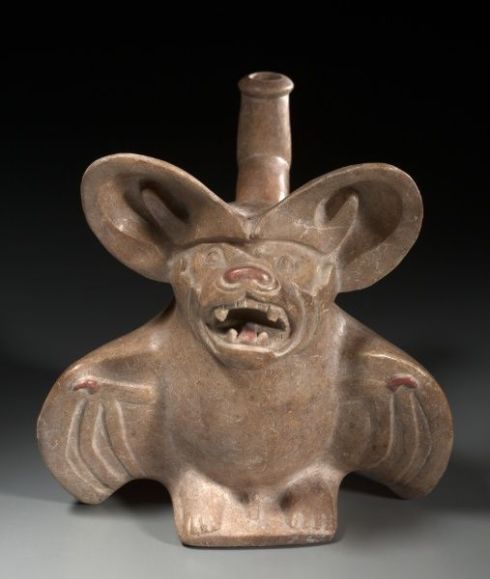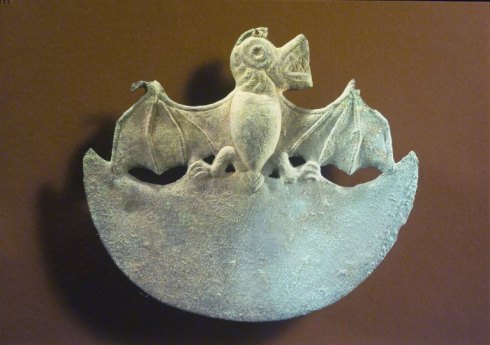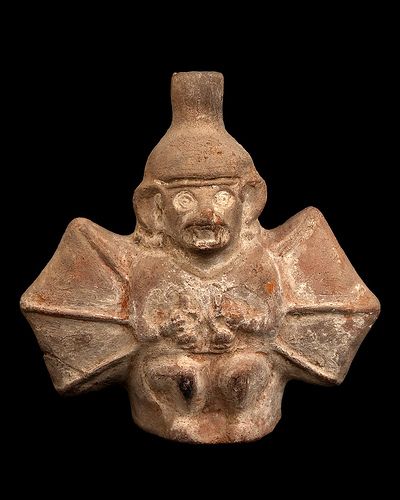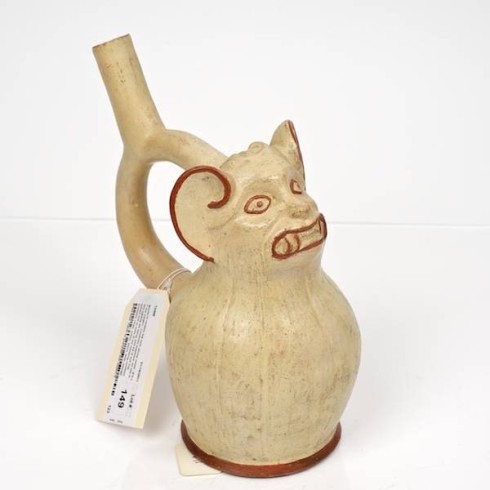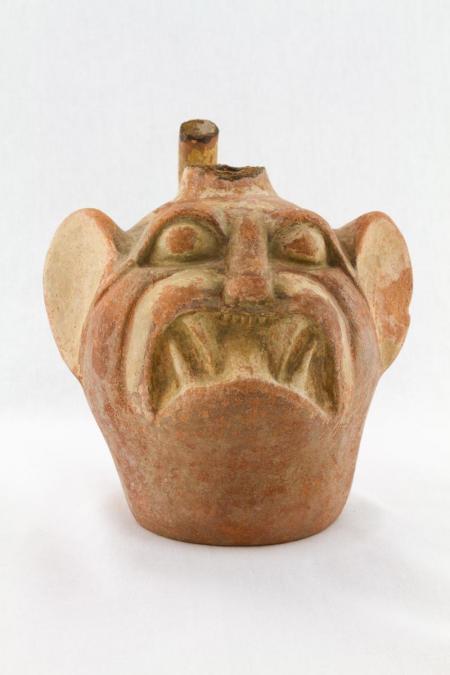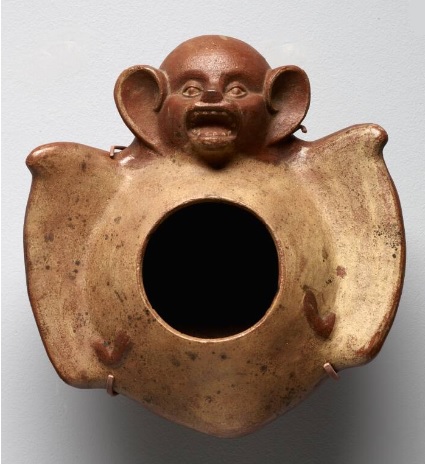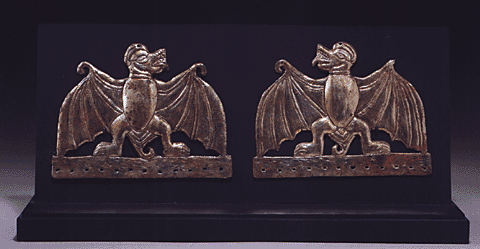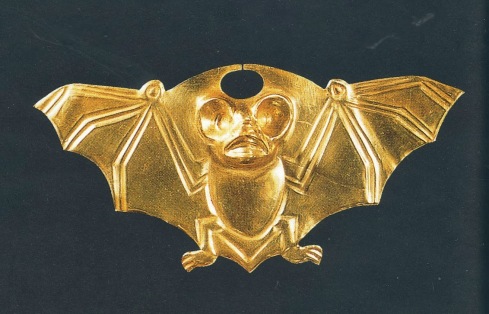You are currently browsing the tag archive for the ‘Underworld’ tag.

As a Halloween treat, here is a pen and ink drawing which I made of a great dark fantasy metropolis (which is also a lurking predatory fish). As you can see, there are three stages to the composition: the cerebral top portion inhabited by angels, gods, and flying marvels; the primal underworld at the bottom (which is filled with wailing souls, dark sacrifice, and insatiable hunger); and, in the middle, a glistening city between the two extremes. In the sky, Apollo, god of prophecy and the arts, rides his chariot angrily towards a blithe Icarus. At far right, Death watches the city while, beneath the towers (beyond life?) the inhabitants…or possibly their souls walk through a Tartarus of appetites and chthonic marvels. I am sorry that it is too small to appreciate (it took me forever to draw all of the little ghost figures and monsters which are under the fish). The piece speaks to the larger nature of humankind’s collective existence (and our appetites) but I feel the supernatural monsters and crystal landscape with the heavens also speaks to larger possibilities we could aspire to. I am sorry it is slightly crooked in this shot: this was the best picture I have but it is slightly distorted (until I can get a finer scan made).



I am back from the bosky hills and verdant dells of West Virginia and SE Ohio and I have a lot of new ideas and stories to share. Thanks Mom and Dad for the lovely visit and all of your kindness. Also, I want to thank Dan Claymore who did a superb job in my absence. Dan understood the purpose of Ferrebeekeeper and matched the tone beautifully (although that Japanese fishmarket made me anxious for the oceans and our flatfish friends). Because of his excellent work, I realize I should take more vacations. Dan also confided in me that he found the project intimidating because of the perspicacity of the polymath readers…so, as always, thank YOU!
When I travel, I carry a little book and a tin of pens and colored pencils (my tin is shaped like a sarcophagus and is interesting in its own right, but more about that later). I like to quickly draw little colored sketches of what pops into my head or what is in front of me. Sometimes there are realistic. Sometimes they are utterly fanciful. They are sometimes silly and occasionally sad. I have dozens of volumes of New York drawings, but I figured I should share all the little sketches I made on my trip (unfortunately nobody posed for me–so there are no portraits). Keep in mind that these are sketches–so they are quick and imperfect. For example, I drew the one at the top in the car as my family and I went to a wedding in the central mountains of West Virginia, and half way through I realized I didn’t have a dark gray pencil. Roads are hard for me too (as are straight lines in the moving car). Maybe this says something about the unnatural yet astonishing nature of our highway infrastructure.

In the car, I also drew this humorous drawing of a gnome kingdom. My mother was describing a nuclear weapons facility somewhere which she visited during her Pentagon career, and I apparently misheard the name. This delightful misunderstanding engendered a whole didactic gnome world. Fribble Fribble!

This drawing is the corner of the yard at home with autumn cornfields beyond. Vinnie the barncat is sneaking onto the right corner, catty-corner from the old Amish farmstead. I wish I could have captured Vinnie better, but Rory the obstreperous adolescent poodle chased him off, before I could catch a better likeness.

No Ferrebeekeeper sketch collection would be complete without a magical flounder. This one apparently has a direct connection to the underworld. More about that in later posts.

Speaking of the underworld, here is a little drawing of the world beneath the topsoil. There is a lungfish, a brumating turtle, a mole, a mummy, and an ant colony, but beneath these ordinary items is a whole gnome kingdom. Don’t worry! I don’t believe in gnomes. Their tireless tiny civilization really represents bacteria to me…oh and humans civilization too (artistic allegory is more of an art than a science). This macro/micro dichotomy is captured by the shoes of a full sized (albeit anachronistic) human at the top left.

This is a quick impression of a sunset which was SO beautiful. If only I could truly have captured more of its sublime luminescent color….

This is my parents’ pond, which I love more than I can tell you. Unfortunately a big drip came out of my dip pen and made the ducks look monstrous. There is a hint of autumn orange in the trees. This is another one that frustrates me, because reality was so pretty.

I watched the second half of a documentary about the circus on PBS. It seems like the circus was more important and central to our nation than I knew (although I should have guessed based on current politics). I represented the performers as abstract shapes, but the overall composition bears a debt to Cimabue and his Byzantine predecessors.

Finally here is a picture from the tarmac of John Glenn airport in Columbus. Naturally the plane moved away as soon as things began to get good. By the way I really enjoyed my flight and I am always surprised that people are so angry about flying. For the price of a moderately fancy dinner, we can rocket across the continent above the clouds at hundred miles an hour. We travel like the gods of Greek mythology except people serve us coffee and ginger cookies and, best of all we can truly see the earth from a towering perspective–which is the subject of my last picture which I scrawled as we looped back across Long island west to LaGuardia (I’m glad I am not an air traffic controller). Sadly this picture did not capture the beauty and complexity of Long Island Sound, and Queens (nor even the lovely billowing cumulus clouds) but at least it made me stare raptly out the window at the ineffable but disturbing beauty of the strange concrete ecosystem we are building.

Let me know what you think of my little sketches and, now that summer vacation is out of the way, get ready for some October horror and Halloween fun! Oh! Also get ready for Dan Claymore’s book about a human gumshoe in the dark robot future. It will be out before you know it, and it is going to be amazing!

This year for Halloween we featured a list of amazing snake monsters from around the world…and yet the world is a big place and snakes are widely feared and revered. Therefor we are looping back to Africa for a final amazing snake deity. This is Nyami Nyami, god of the Zambezi river and one of the masters of the entrance to the underworld. Nyami Nyami has the body of a fish and the head of a snake (he sounds kind of like a giant catfish to me). Nyami Nyami was sacred to the Batonga people who lived beside the Zambezi in what is today Zambia. His particular home was said to be the Kariba rock, a great mid river escarpment located in a narrow gorge. Here Nyami Nyami could slide between worlds in order to explore the watery realms of the afterlife or he could come back to Earth to visit his equally aquatic onster wife who lives in the lower Zambezi where it empties into the Indian Ocean…or he could travel to the upper upper river (since other tribemen claim he dwells in the realm of foam and thunder beneath Victoria Falls).

At any rate, in the mid-1950s the Kariba Gorge was chosen as the location for a huge hydroelectric dam. Nyami Nyami’s worshipers among the Batonga were sure the dam would not happen because of the god’s wrath and indeed a freak cyclone (and the attendant flood) nearly scuppered the project, but the dam was built and the Kariba rock is beneath the water. Some say the Nyami Nyami is angered because he is separated from his spouse. Others think he has fled from this world to leave humans to their own devices. Yet worship of Nyami Nyami continues unabated and he has become an even more popular deity and symbol of the region (staffs carved in his likeness are sold to tourists or given to revered guests). Perhaps the great snake god still watches the river to the same extent he ever did, just waiting for the dam to silt up and be brought down. Let me know if you are ever heading to the Zambezi, it sounds like a beautiful river. Maybe you will catch a glimpse of the huge serpentine god in the watery depts. Or in the shadows beneath Victoria Falls.


I colored a flounder drawing I made last Halloween with watercolor and colored pencils. This is “The Sole and the Souls” (Wayne Ferrebee, 2016, Ink, watercolor, and colored pencil on paper). It features a sole covered with parti-colored fungi swimming through a Roman cemetery of late antiquity. I think those might be Charun’s snakes in the sky (and his servitor dragging the gladiator into the darkness).
Here is an amazing painting of fantastic glistening underworld creatures. I greatly admire the artist, Robert Steven Connett, a self-taught contemporary painter who crafts baroque landscapes of dark lifeforms and gleaming spirit-things. At their best his works come together to portray life as an interwoven web of symbiotic appetite and need—a phantasmagorical ecosystem of amalgamation and ingestion. It is as though Giger were a gifted mycologist or invertebrate zoologist. As far as I can tell, Connett has made few inroads in reality, where art is controlled by a click obsessed with fatuous celebrity and tiresome naval-gazing deconstructionism. However he has created his own strange markets online (in much the same way that he builds his own imaginary underworld ecosystems). It almost gives a person hope.
I realize this has been an art-heavy week…but I will make it up to you next week when, in celebration of Halloween, we have a whole week dedicated to a unifying theme of macabre terror. The Halloween themes of years past–the children of Echidna, the Flowers of the Underworld, even the spiritual and ontological horrors of the undead–raised no eyebrows on the internet, so I am ratcheting up the dreadful violence this year. Steel yourself for the frightful flesh-cutting terror…uh, and for more art too I guess.
Longtime readers will remember that Ferrebeekeeper has a great fondness for the magnificent art and pottery of the Moche, a civilization noted for sophisticated agriculture, ultra-violence, and, um, magnificent art and pottery. The Moche lived in the rich coastal lands of what is now northern Peru. In the past we have written about their art of sea monsters and human sacrifice, and of waterfowl. Today we look at Moche bat-themed art.

Double lobed whistling bat sculpture (Ca. 450 – 800 A.D.) the bat makes a chirping/whistling noise when water is poured out and air is blown in
Bats were beloved subjects of much pre-Colombian art (I owe everyone a post about the bat in Aztec art and myth). Although they were great artists, the Moche were scary people who were always sacrificing and garroting and flaying (more about that next week) and excarnating and hanging corpses everywhere. Yeesh… Perhaps unsurprisingly, the bats of Moche art are scary creatures with grimacing monster teeth and near-human expressions of malice and grief.
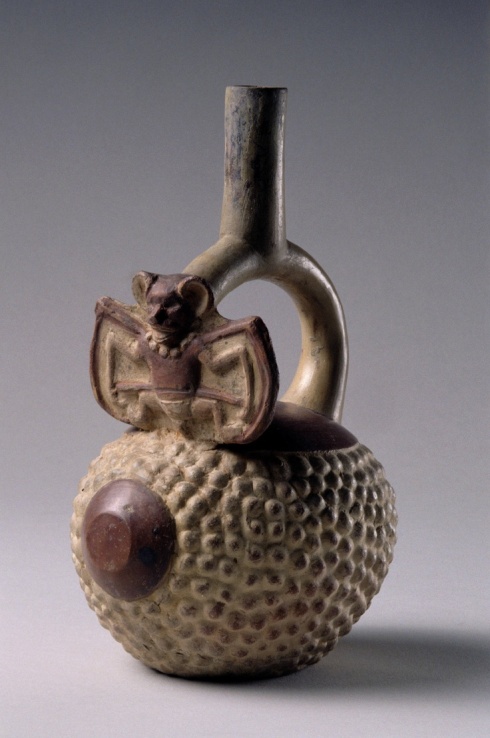
Early Intermediate (Moche IV), Mochica Molded stirrup-spout vessel, A.D. 500–700 Ceramic with red and white slip North coast, Peru
Sadly we don’t know precisely what place the bat held in Moche mythology. In fact we don’t know anything about Moche mythology except what we can intuit visually. However there are lots of bats to visually interpret and it seems like a safe bet that they had a chthonic underworld meaning (as they do in Western art and culture). These bats are demons and monsters born of the dark night-side of the human spirit.
All of these grimacing fanged bats with bared claws and anguished eyes make me think of the Moche people themselves—caught up in their centuries-long game of bloody worship and savage status. I wish I could help them, or even understand them, but they are gone. All we have are their skeletons and their beautiful dark art.
Mount Mazama was a giant volcano located in the Cascades. Around 7700 years ago the volcano erupted so violently that the top mile of the mountain exploded and the remaining cone collapsed. The vast caldera became a deep empty hole—which soon filled up with water and became a beautiful lake—Crater Lake in Oregon.
Crater Lake is indeed very lovely, but it is also disquieting. There are no rivers or streams which empty into it (after all it is located atop what remains of a vast mountain) but the snowfall in the region is so high that the lake easily fills up with extremely clear melt water. The clear water combines with the lake’s great depth to absorb all hues of light other than indigo—so the lake is dark blue. The deepest point is 1,943 feet (592 m) below the surface, which makes it the deepest lake in the United States and the seventh deepest lake (by average) in the world—deeper even than the otherworldly depths of Lake Baikal. Originally the lake had no fish (although they were added by humans in the twentieth century). Its waters are extremely cold and items which fall into it decay slowly.
The Klamath people, a Native American tribe who have long lived in the region, have a sacred myth which tells about the formation of the lake. Long ago, there were two great spirits, Skell, spirit of the sky, and Llao, the spirit of the underworld. Llao lived beneath Mount Mazama and sometimes he would leave the underworld and venture to the top of the mountain, where he could almost reach Skell’s dwelling. One day, as he was watching the world from the mountain top, Llao saw the beautiful daughter of the chief of the Klamath people. He eagerly paid suit to the lovely maiden, but he was hideous and she spurned his advances.
In anger Llao began to hurl fire and stones onto the Klamath people, and they begged their greatest benefactor, Skell to help them. Skell came down to the very lowest point of his kingdom–the top of Mount Shasta–and began to battle Llao, who stood at the highest point of his realm—the top of Mount Mazama. Soon the spirit battle became more tumultuous as other spirits of the sky, the land, and the underworld joined in. The two greatest medicine men of the Klamath saw that the war of so many spirits was destroying the world so they hurled themselves down into the volcano’s caldera as a sacrifice to appease the angry spirits. The lesser spirits of the underworld were indeed appeased and ceased their fighting, but Llao’s wrath at his rejection was not sated. He continued to battle Skell but he was overwhelmed and defeated. Skell hurled vast magic at Llao and the entire mountain exploded.
Llao fled down into the huge hole which was created. Some say he died there from Skell’s magic, whereas other’s believe he lurks somewhere in the underworld (with Gong Gong maybe?) waiting for the right moment to make his return. Whatever the case, Skel disliked the site of the vast pit in the world and he made sure to fill it with water and keep it filled. Looking at aerial pictures of Crater Lake, it is hard not to respect the narrative wisdom of the Klamath story tellers. Few things on Earth look more like an entrance to the underworld, and even the most literal volcanologist would have to concede that volcanic calderas are a place where the world below comes most directly to Earth’s surface.
Ancient Egyptian mythology can seem like a baffling tangle of multi-faceted gods who subsume each others’ identities, roles, and symbols. Perhaps the best way to understand the mutable nature of Egyptian deities is to recognize that the pantheon reflected the changing political realities of Ancient Egyptian culture. The drawback with this methodology is that the culture of Ancient Egypt lasted for approximately 3000 years (!), so it is still not easy to summarize Egyptian mythology.
Consider the deity Amun Ra. Amun Ra ended up as the king of the gods of Egypt—the emperor of heaven who created all things. There were times in the New Kingdom, when worship of Amun Ra bordered on monotheism and the other gods were regarded as flickering extensions of Amun Ra. However it did not start this way. Originally Amun and Ra were separate. In the Old Kingdom Amun was a mysterious god of hidden magical breath. The Old Kingdom ended in 2181 BC in a dark age of war and strife which lasted for a century (a time now known as “the First Intermediate Period”). At the end of this period, Amun had grown in importance and become the god of the winds and the patron god of Thebes. The Middle Kingdom was a glorious age for Egyptian civilization, but it too came to an end in stagnation, civil war, and invasion—”the Second Intermediate Period”–which lasted from 1786 BC to 1550 BC. During this Second Intermediate Period, a mysterious group of heterogeneous invaders—the Hyksos—took over Egypt and created their own dynasties. The Hyksos were finally driven from Egypt by nobles from Thebes who founded the 17th dynasty (the first of the New Kingdom). Since Thebes was politically ascendant, the Theban patron god Amun merged with Ra and became ruler of the gods. Before being combined with Amun, the deity Ra had long been worshiped as the sun god.
Ra traveled through the firmament on two solar boats. By day he traveled through the sky on the Mandjet (the Boat of Millions of Years). At night he took on his form as a great ram and traveled through the underworld on the Mesektet (the evening boat). Ferrebeekeeper has touched on the Mesektet before, but we were concentrating on giant evil snake deities back in those days, so ram-headed Ra didn’t really get his due in the earlier post.
Amun Ra had several forms which reflected his diverse origin, but he was most often portrayed as a mighty ram or as a pharaoh with a distinctive towering headdress…or sometimes as a falcon with the sun on his head. When I started writing this article I had hoped for some explanation of why Ra was called “Ram of the Underworld” or why the ram came to prominence over other animals to wind up as the favored animal head for the king of the gods, but if such explanations exist, they have eluded me. You’ll have to be content with the fact that the king of the gods of Egypt was most often a ram. I’m not even sure if I said that right: but I guess I don’t need to worry about literalistic ancient Egyptian priests and worshipers showing up in the comments to berate me (a consideration which crossed my mind when I decided to write about Amun Ra as opposed to other supreme sheep gods whom I could name).
In the Greco-Roman cosmology, the underworld was a fearsome place not just for mortals, but for the gods themselves. For one thing, only a handful of deities had full freedom of passage to the realm of the dead. Hades reigned there and could come and go as he pleased (though, like a grumpy rich man, he seldom left his dark palace). Persephone’s annual journey to Hades and back defined the seasons. Mysterious Hecate, the goddess of magic and thresholds could go anywhere at all, as could Hermes, the fleet-footed messenger of the gods (and the psychopomp who guided departed spirits to the final door). Nyx, alien goddess of primordial night, existed before the underworld…or anything else…and will exist long after. Although his retirement palace was in Tartaras, the deposed king of the gods Cronus/Saturn seems to have been free to roam the firmament. The Erinyes, spirits of furious retribution could temporarily leave the underworld only in order to goad their charges there…and that is about the full list. There were a lot of deities imprisoned in the underworld and there were lesser deities who worked there…but they were permanently stuck. Feasibly the Olympians, the most powerful gods who ruled heaven, the seas, and earth, could enter the underworld and leave again, but they never deigned to do so. Gaia had the underworld within herself, so she stands beyond the paradigm (and perhaps the abstruse children of Nyx do too…but they were tangential to classical myth).
There is of course an important exception. One Olympian god was the child of a mortal mother. Because of this human origin, and due also to his fundamental gifts and nature, he took the heroes’ journey and went down into the realm of the dead. Here is the myth. I have hesitated to tell it before for personal reasons: this god is one of my two favorite Greek gods but he is also my least favorite—the rewards, delights, and downfalls of worshiping him are all too evident!
Anyway…
Semele was a beautiful princess. From heaven Zeus spied her beauty: he courted her and won her heart (without using subterfuge or force), but, unfortunately, his lack of guile allowed jealous Hera to easily discover the affair. The angry queen assumed the guise of an ancient crone and paid a visit on the lovely young princess. The crone flattered the princess and fussed over her whims until Semele was convinced the old woman was a dear friend. Then Hera asked who the father of Semele’s unborn child was (for the princess was just beginning to show her pregnancy).
“The father is none other than mighty Zeus, king of all the gods,” announced the princess.
“Eh, I wonder…” replied the old woman. “All sorts of scoundrels have grandiose pretensions and men will tell any blasphemous lie to seduce a beautiful princess. Zeus? King of all the gods? What nonsense. Back when I was young and beautiful, I used to have a no-good man who told me the same thing. If he really is Zeus, why doesn’t he show himself to you in his full splendor.”
Doubt grew in Semele’s heart. Who was her handsome lover, really? When next he was in her arms, she resolved to find out. Using all of her beauty and wiles she cajoled Zeus and beguiled him and convinced him to promise her a boon. She even made him swear on the River Styx–a sacred oath, binding even upon the gods.
“If you are Zeus, show yourself to me in all of your divine splendor!” she demanded. Zeus equivocated and explained. Finally he outright begged to be free of his promise, but Semele was adamant: he had sworn an unbreakable oath. Sadly Zeus selected his smallest thunderbolt and gathered his most quickly passing squall. For an instant only, the sky father revealed himself as a force of nature with all the power and glory of the heavens, but an instant of such revelation was too much. Semele was burned away and only a pile of ash remained…and a pre-term baby. In horror and sorrow, Zeus grabbed up the little fetus. He hacked a hole in his “thigh” and sewed the tiny demigod into his own body (online classicists have informed me that “thigh” is a euphemism which decorous 19th century myth writers used for gonads). Then he set off for Nysa, a valley at the secluded edge of the world. The king of the gods knew exactly who was responsible for Semele’s death, and he wanted his son to grow up free from Hera’s wrath.
When Zeus reached Nysa, he gave birth to Dionysus directly from his “thigh.” Zeus then gave the beautiful infant to the wild nymphs of Nysa–the maenads–to raise. The maenads brought the child up with their own intuition, wildness, and delirium. Leopards and tigers were his playmates. At the eastern edge of the world strange indecipherable noises could sometimes be heard. Grapes grew there too in superabundance, and the child demigod realized how to make them into sweet intoxicating wine. He grew into an inhumanly beautiful adolescent. Then he clad himself in glorious purple robes and began to make his way through the world towards civilization (which, coincidently for this Greek myth, was Greece).
Everywhere Dionysus went he brought the secret of wine making. Sometimes he rode in a leopard drawn chariot with throngs of naked maenads running before him wildly singing his glory. Other times he revealed his divine nature to humankind differently—more subtly…or more strangely! But the ecstasy, beauty, and power of his gifts of inebriation always became readily apparent. Dionysus grew into the god of art, fertility, drama, and creation, but there is delirium, madness, anti-creation, and an orphan’s violent sadness to him as well.
In his wild youth as a demigod in the mortal world, Dionysus had many adventures (in fact, we’ll circle back to some of these stories in later posts). Although he was powerful, he was youthful, delicate, graceful, and kind. Clad in purple robes, half-human & half-divine, asking us to drink his wine of revelation…he seems terribly familiar. At the end of his pilgrimage through Greece he came to Olympus and he effortlessly ascended up it to join his father among the other gods. His divinity was obvious to all. Hestia stood up from her throne and offered it to her nephew and went over to take a place at the hearth. Hera gritted her teeth and plotted how to win other battles. Zeus beamed and asked his son if there was anything he wanted as a gift on the special occasion of his apotheosis.
For all of his wild delirium, Dionysus was a kind god…and an orphan. He plaintively asked his father if he could see his mother. Zeus readily assented…and then some. He told Dionysus to go get his mother and to bring her back to Olympus. And so it was. Dionysus went to the underworld and took his mother’s spirit away from ignominious death up to the glory of the heavens. The underworld part of this story is an afterthought—a tiny grace note at the very end. However it is worth remembering that Dionysus’ story runs through the world and the underworld. Drink and delirium are also keys to the realm of the dead, as any tragedian or hardened boozer could readily tell you.
One of the best things about the Greek mythological pantheon is that it contains gods who ruled before the Olympians but have passed into obscurity…as well as weird outsiders who hardly seem to belong in the story at all. Some of these deities were once central to things but have been broken, defeated and deposed (like Cronus), whereas others are otherworldly and cling to the darkest most shadowy edges of mythical realm (like Nyx, the goddess of primeval night). I bring this up to introduce the Erinyes, the goddesses of savage unending vengeance, who are sometimes known in English by the heavy-metal name “the Furies”.
The Erinyes are mentioned in the oldest surviving Greek texts which we can translate. They punished the most terrible criminals who had violated the fundamental moral order of ancient Greece (a slave society where murder was a part of everyday life). Those who felt the endless wrath of the furies were guilty of crimes such as violating oaths, abusing guests, committing incest, or murdering kinfolk. The Erinyes’ dwelled in the underworld, but if a malefactor brought their wrath upon himself, they would pursue him across the land, the seas, and beyond till they could rip him apart. Death brought no release from their tortures–since they carried their victims’ spirits to the depths of Tartarus to punish forever with snakes, flails, burning brands, and brass-studded whips. The Erinyes took the form of horrible angels: they had huge dark wings and the bodies of twisted hags (although occasionally they could take on a terrible beauty). Some poets asserted there were three furies—Alecto, Megaera, and Tisiphone–but in other sources they seem numberless and lacking individuality.

Orestes seeks shelter from the Furies at teh Foot of Athena (Engraving from G. Schwab’s Die schönsten Sagen, 1912)
Erinyes show up in the most horrible myths of murder, savagery, and everything gone appallingly wrong. They therefore make appearances in some great works of literature and art…like The Eumenides, the final play of the Oresteia. In fact the name The Euminides (meaning “the kindly ones”) refers to the dreadful Erinyes—for like Hades (or Voldemort) it was thought unwise to refer to them except via euphemism. There are different versions of how the ancient goddesses came into being. According to Hesiod they were born when the Titan Cronus castrated his father the sky god Uranus, and threw his genitalia into the sea (an event which also precipitated the birth of Aphrodite). Other poets, however assert that they are even older and descend directly from the outsider goddess Nyx, who predates the other gods.


